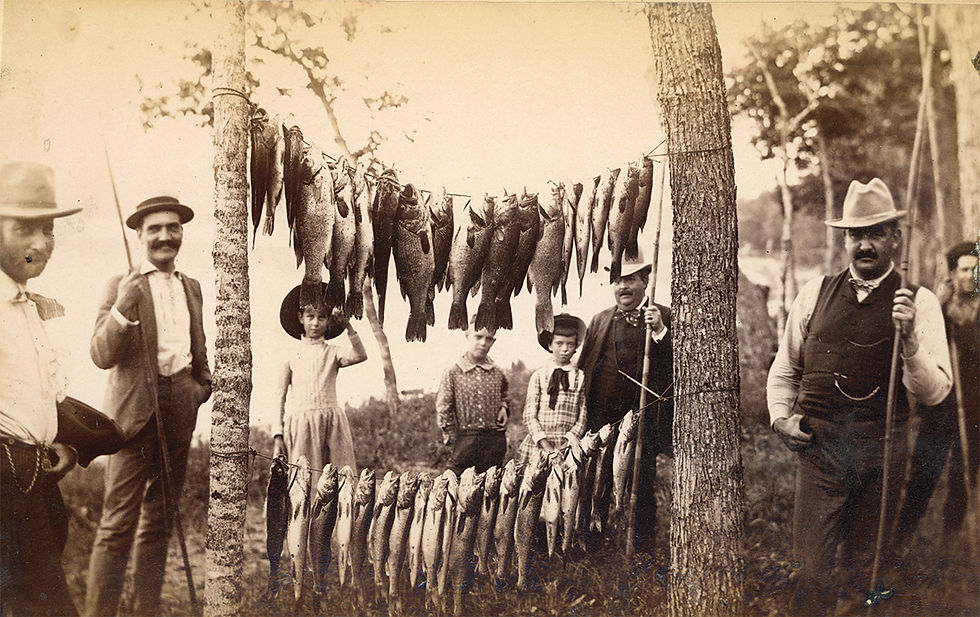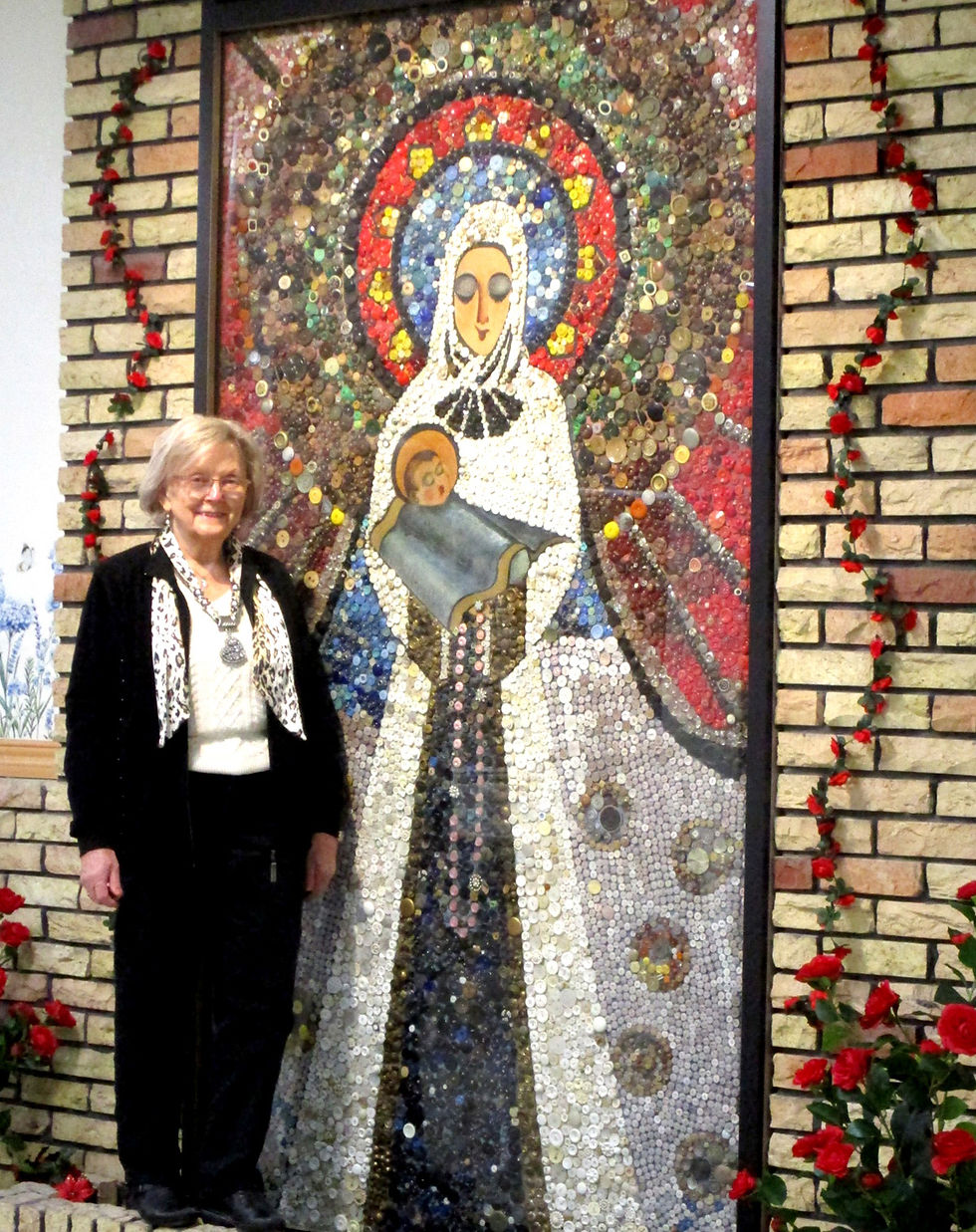‘It’s our therapy group’
- Sr Perspective

- Feb 29, 2024
- 4 min read
Close-knit group of Long Prairie woman come together to share stories, love for knitting
By Jennie Zeitler

A group of knitters, all from the Long Prairie area, all get together faithfully each Friday to knit and to talk about their lives. The nine regulars have been meeting since March 2019... and they try their best not to miss it.
“We sit and knit and get ideas of things we need to do,” said Nancy Leasman.
“It’s very relaxing,” said Susan Kroll.
Ruth Wingeier explained that knitting helps a person process things.
“It’s great when waiting for babies to get born,” she said. “At midwifery conventions, at least 10 percent of the attendees are knitting.”
“It’s our therapy group,” said Sue Stine.
That first year, in 2019, the group members knit chemo hats and donated them to CentraCare Hospital in Long Prairie. Since then, they have worked on a variety of knitting projects, both big and small.
Every project has a story, but some are a bit more fun and interesting than others. Kristin made gray fingerless gloves from the yarn of Icelandic cross sheep that live on the farm in northern Minnesota where her daughter got married.

Nancy knit a shawl for a mother and child statue that sits in her entryway. They don’t look cold anymore.
One of the most unusual projects mentioned around the table was chicken sweaters. A friend of Kristin Wilson’s has pet Silkie chickens, and Kristin has knit five or six sweaters for them.
One of the larger projects included two temperature blankets. The blankets are 365-day projects, with only one row knitted or crocheted each day. In 2023, Kristin knitted a high-temperature blanket and a low-temperature blanket. She chose yarn colors that corresponded to the high and low temps each day and documented it with the blankets.
The knitters have a rich variety of life experiences behind them. Some are lifelong Long Prairie or Todd County residents. Others come from further away. Lydia Smith-Lenardson is a Pacific Islander. Needle arts is not a part of her cultural heritage, but an aunt taught her to crochet when she was 11. She was taught to knit when she was 38.
Many of the knitters learned when they were about 10-12 years old, often from their grandma or their mom. Kristin Wilson learned the earliest, at age 5.
“Mom gave me little balls of different color yarn and I knitted a scarf,” she remembers. “I started knitting in a real way when I was 14.”
Scarves or pot holders were the most common first project for many.

Marilyn Gibson’s grandmother came to live with her family when she was about 10. Since Marilyn’s mom was left-handed, it was much easier for her grandma to teach her. She knit a pot holder first and then a stocking cap. Then, she concentrated on socks.
Ruth’s first project was at age 6, when her mom taught her how to knit. She wanted to make clothes for her Barbie dolls and baby dolls. The first thing she did was a skirt.
Susan’s first project was a dark green sweater for her mother.
“I don’t know what possessed me,” she said. “And the teacher was left-handed so I knit the whole thing ‘wrong’!”
Nancy’s mom was a knitter. When Nancy contracted rheumatic fever at age 12 and was hospitalized, one of the gifts she received was a pair of wood knitting needles with red balls on the end.
“I still have them somewhere,” she said.
When Sue Stine received a knitting kit for Christmas at age 11, she knit a dress for her doll, Primrose.

Many of the knitters are also accomplished at other needle arts such as crochet, embroidery and weaving.
Celeste Miller learned from her grandma how to crochet, when she was 10. She is also an experienced embroiderer, but she wanted to learn a new artistic skill. It wasn’t until she was 69 that she learned to knit.
“I like the way knitting looks, compared to crochet,” she said.
She learns about knitting from the other group members, particularly that everyone makes mistakes. Ripping out a knitted section is called “frogging.” Deconstructing a piece one stitch at a time is “tink-ing.” There were commiserating groans from around the table as the ladies talked about fixing mistakes.
“Some of us have been known to knit three gloves to get two that are the same size,” said Nancy.
Susan described having tension changes in the middle of a project when a life stress event occurs, something that most could identify with. Tension changes happen when knitting gets looser or tighter, depending on how the knitter is holding the yarn.
Kristin knit her first sweater as a gift for her niece.
“It was an Aran, pretty dense with a lot of cables,” she said.
Knitters everywhere usually have at least one unfinished project tucked away somewhere.
“I have a child’s sweater that has needed one sleeve for 20+ years,” said Sue. “It’s knitted now, it just needs to be sewn in.”

The knitters love the opportunity to knit in public, and display their work. Each year at the Todd County Fair, several of them knit and answer questions in the 4-H building. At the October Timeless Art and Music event by the Long Prairie Chamber Orchestra, there were several displays of various knitting projects by group members.
The group now meets at Prairie View Manor, where Lydia lives. They previously met at two different places, but it’s much easier for Lydia to get around in her chair at Prairie View. There is also a large room where the group has plenty of room. It’s a relaxed group with “no agendas, no officers and no attendance.” But when Lydia has other plans, they have to figure out something else, they agreed.
No matter where the rest of their time finds these gals, they are together for a few hours each week, knitting and recharging in each other’s company.




Comments